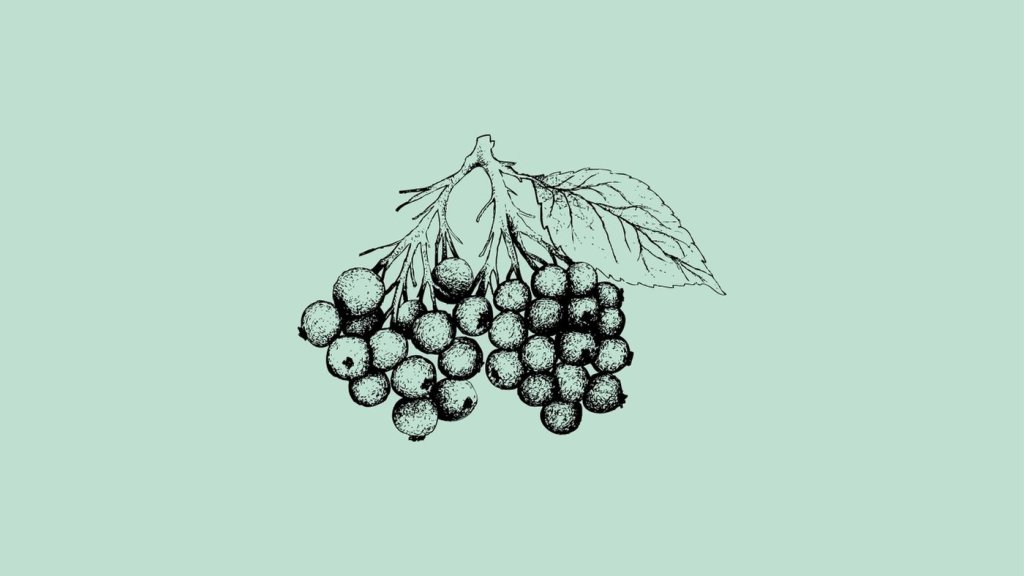The problem with elderberries is that they can look like a host of other wild ripe berries. These lookalikes include water hemlock, pokeweed, deadly nightshade, and common buckthorn.
While elderberries (Sambucus canadensis and other Sambucus species) are generally safe and edible when ripe and properly prepared, it’s essential to be aware of some poisonous lookalikes you may come across on your foraging walks.
The 4 poisonous elderberry lookalikes
Before you find yourself eating any elderberry berries, be sure you know which poisonous berries look like elderberries.
As mentioned, poisonous lookalikes include pokeweed, devil’s walking stick, and water hemlock.
What Are You Foraging For Right Now?
We're thrilled to hear your ideas. What would you like to submit today? Feel free to share your thoughts and experiences with us.
1. Water hemlock (Cicuta maculata)
Water hemlock is one of the most poisonous plants in North America. It can be mistaken for elderberries, especially when the clusters of small white flowers and similar leaf arrangements are considered.
How to spot the difference?
Water hemlock has a smooth, hollow stem, while elderberry stems are pithy.
Water hemlock is extremely toxic, containing cicutoxin. Ingesting even a small amount of water hemlock can be fatal, and symptoms of poisoning can include seizures and respiratory failure.
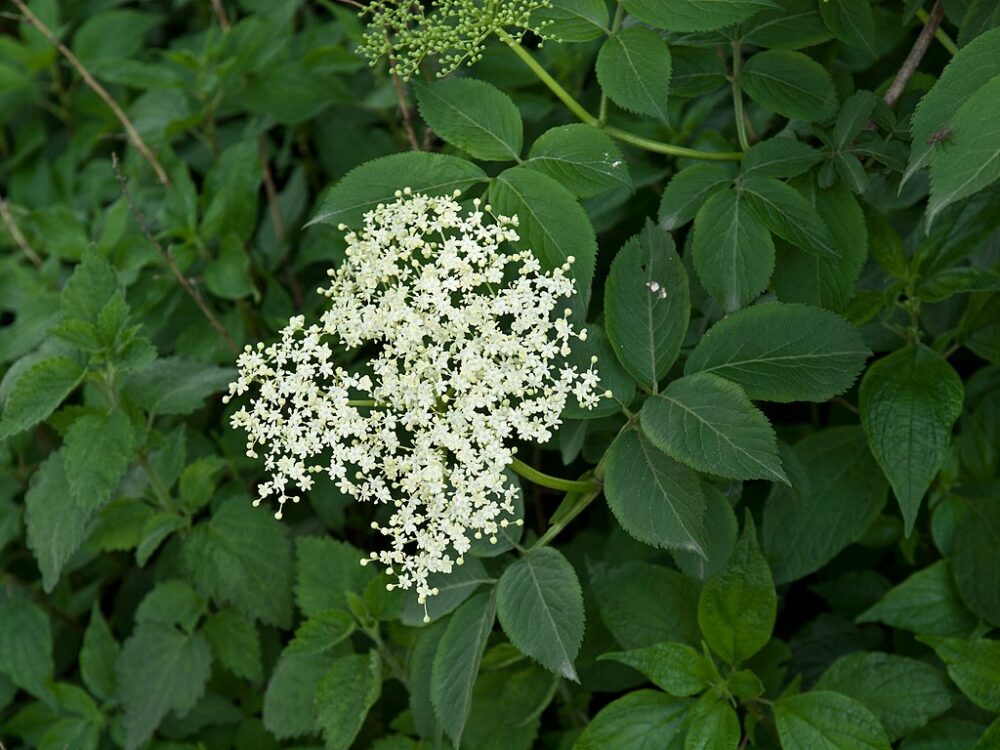
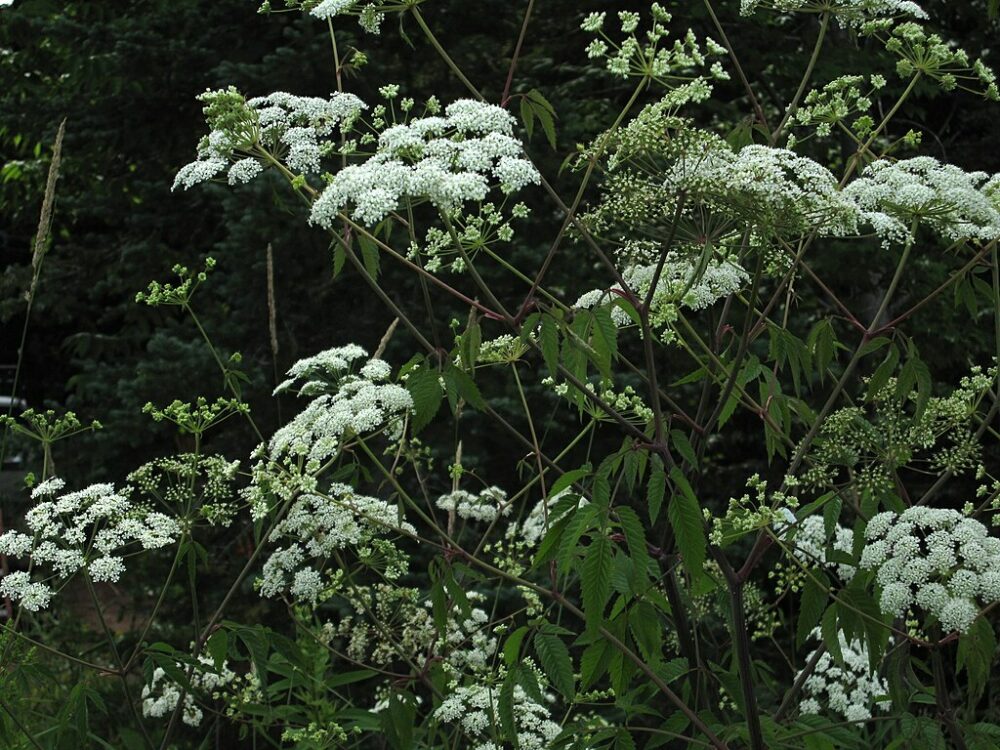
2. Pokeweed (Phytolacca Americana)
While not directly resembling elderberries, pokeweed can sometimes be confused, particularly in the early stages of growth. Also, both may have clusters of berries of similar color and both produce berries late summer or early fall.
Pokeweed is toxic and should not be consumed.
How to spot the difference?
The stem of pokeweed is smooth and often reddish or purplish. It becomes hollow and turns a deeper red as the plant matures. Elderberry stems are pithy and soft, not hollow. The stems may have a purplish tint but lack the pronounced red color seen in mature pokeweed stems.
Pokeweed leaves are simple and alternate along the stem. They are large, lance-shaped, and have smooth margins. Elderberry leaves are compound, with several leaflets arranged oppositely along the stem. The leaflets are serrated, and the overall leaf structure is opposite.
Pokeweed berries (pokeberries) are arranged in elongated clusters that hang from the stem.
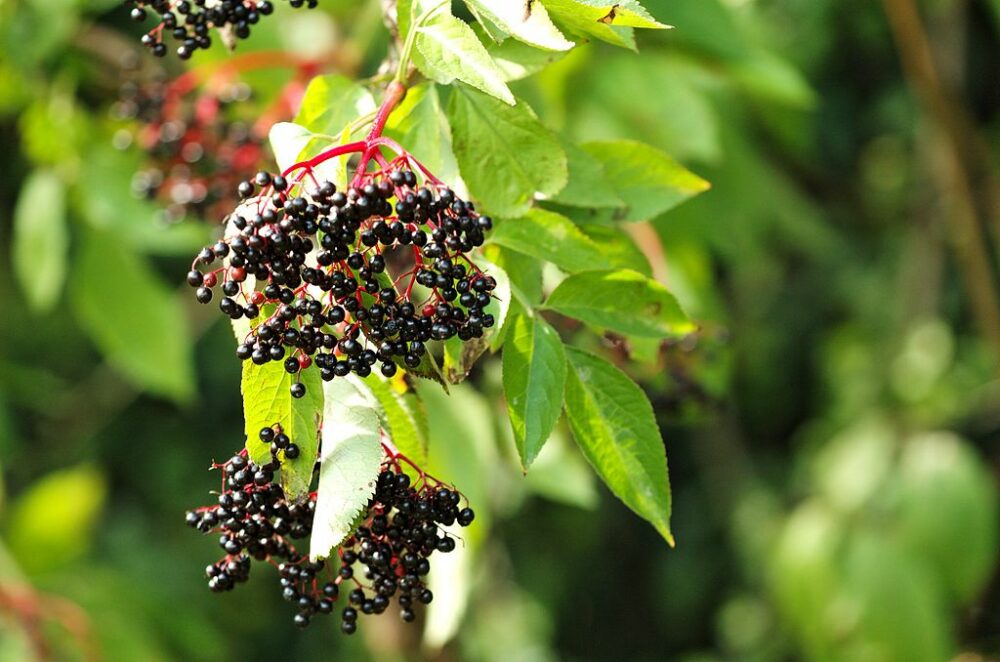
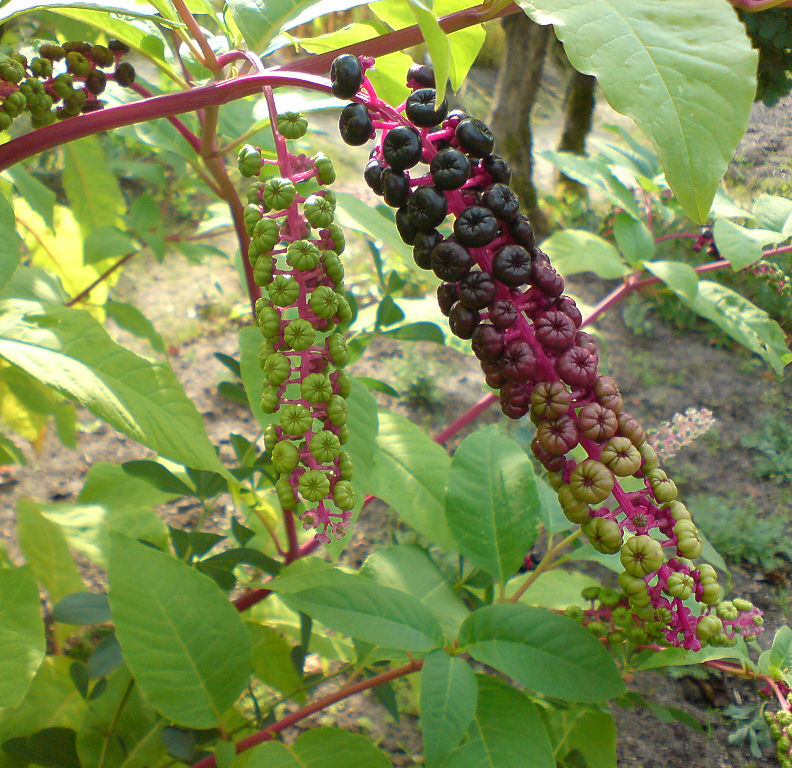
3. Deadly nightshade (Atropa belladonna)
Certain nightshade species, such as deadly nightshade, can have dark berries that might be mistaken for elderberries. Deadly nightshade berries are highly toxic and should never be consumed.
How to spot the difference?
The stem of deadly nightshade is herbaceous, branching, and somewhat woody at the base. The leaves are simple, alternate, and have an elliptical shape.
Elderberry stems are pithy and soft, not hollow. The stems may have a purplish tint, especially when mature. Elderberry leaves are compound, with several leaflets arranged oppositely along the stem.
Deadly nightshade berries are glossy black. The berries are smooth and shiny, resembling small tomatoes.
Elderberries have small, dark purple to black berries arranged in flat-topped or slightly rounded clusters.

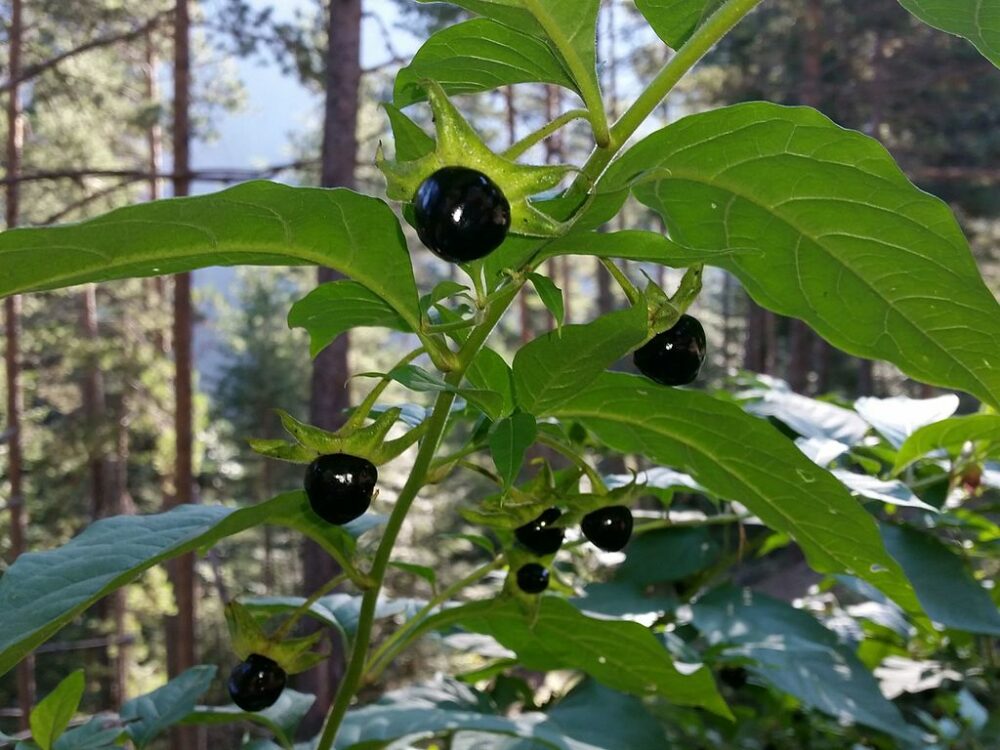
4. Common buckthorn (Rhamnus cathartica)
While elderberries are safe when identified correctly, some species of buckthorn can be mildly toxic.
How to spot the difference?
Buckthorn leaves are simple, alternate, and typically have a glossy appearance. Elderberry leaves are compound, usually with several leaflets arranged oppositely along the stem. The leaflets are serrated.
The stems of buckthorn plants are often spiny or thorny. Elderberry stems are pithy and soft, not thorny or spiny.
Buckthorn flowers are usually small, greenish-yellow. Elderberry flowers are small, white, and have a distinctive fragrance.
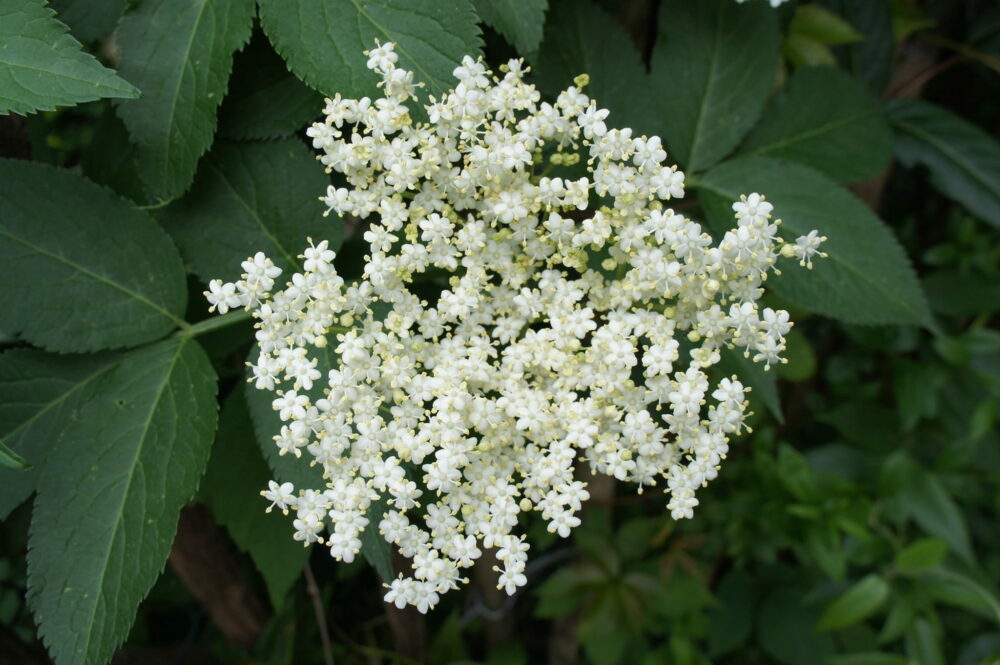
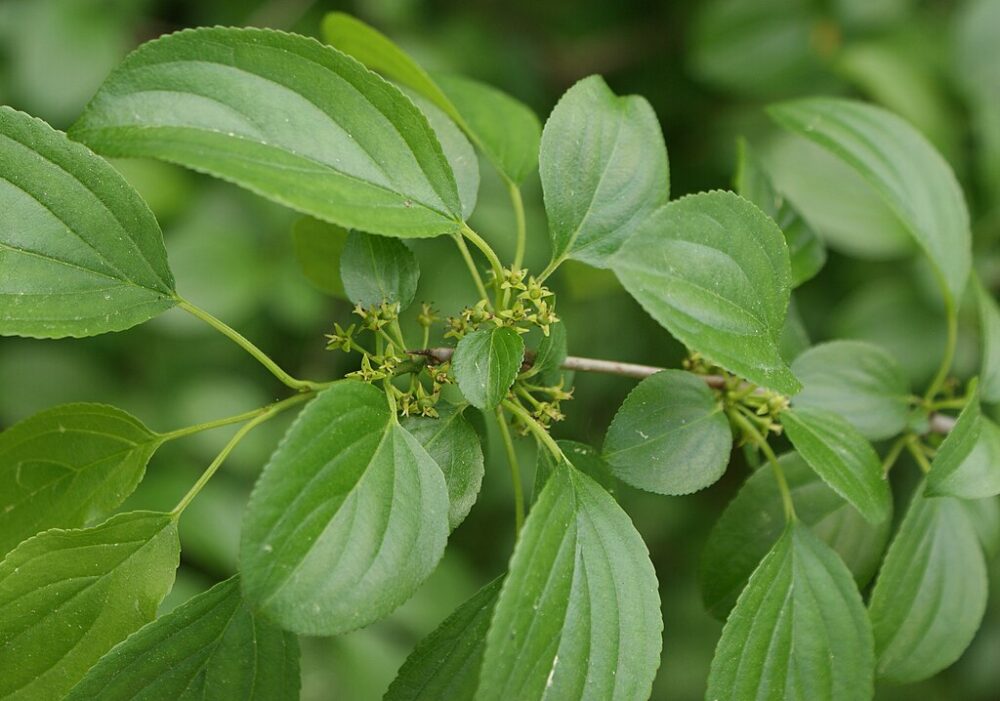
5.Devil’s Walking Stick (Aralia Spinosa)
While Devil’s walking Stick, also known as Hercules’ club, is not considered highly toxic, it is generally not consumed due to its bitterness and potential irritant properties. The plant contains mildly toxic compounds that may cause irritation, and the berries are bitter and not tasty.
How to spot the difference?
Devil’s walking stick is known for its stout, sharp thorns that cover the stem and branches, giving it a spiky appearance.
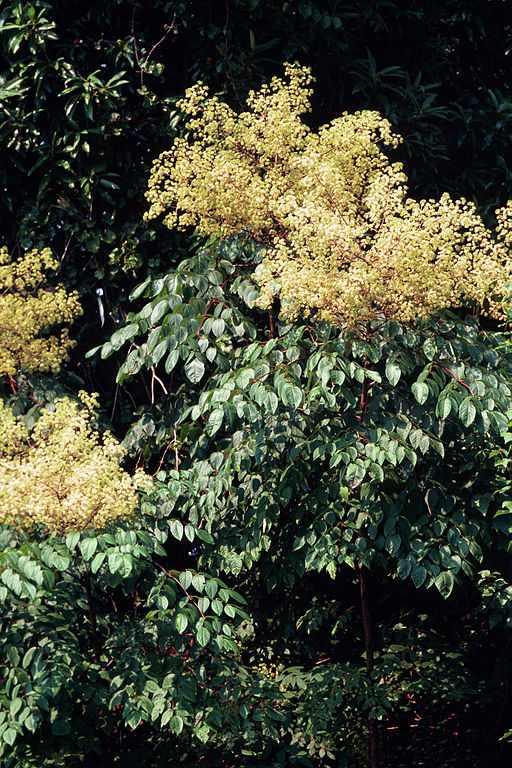

What about dogwood?
Dogwood and elderberry both produce berries and can look similar. The question is whether dogwood berries are poisonous or not.
While some species of dogwood (flowering dogwood, red osier dogwood) produce berries that are technically edible, they are generally not considered tasty and most people will not eat them.
So how to differentiate elderberry and dogwood?
Dogwood leaves are simple and opposite or whorled along the stem. They are generally smooth-edged. Elderberry leaves are compound, usually with several leaflets arranged oppositely along the stem. The leaflets are serrated.
Dogwood flowers are often showy and have distinctive bracts that surround the small, inconspicuous flowers. The bracts can be white, pink, or red, depending on the species. Elderberry flowers are typically arranged in flat-topped or slightly rounded clusters called umbels. The flowers are small and white.
Dogwood berries are usually drupe-like and may be red, white, or blue, depending on the species. Elderberries have small, deep purple to black berries arranged in clusters.
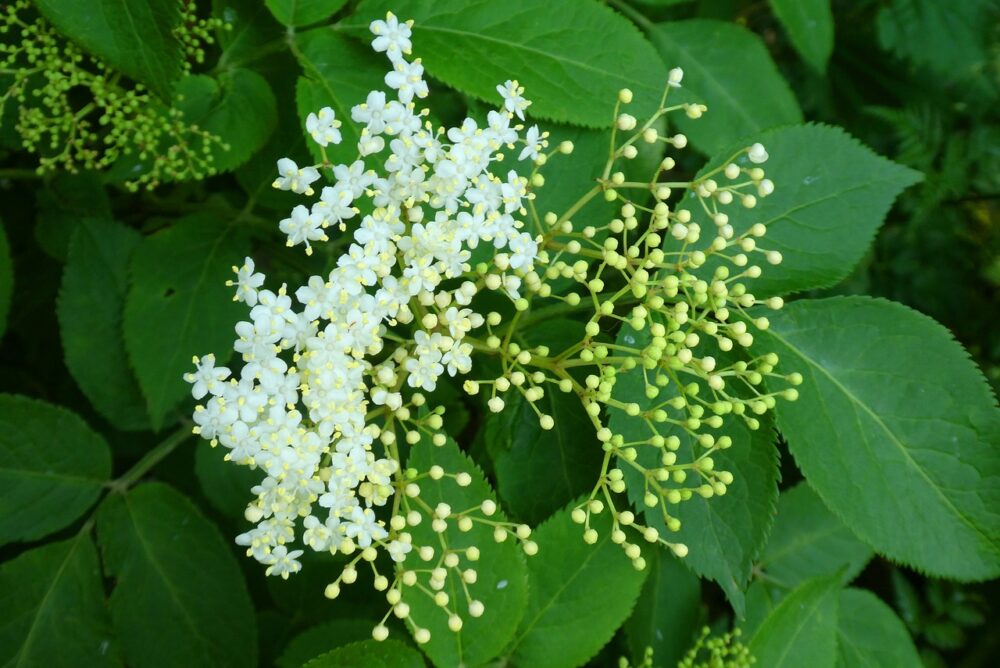

Check out our video on how to identify elderberry and its poisonous lookalikes!
How to identify elderberries?
In the United States, the two most common species of elderberry are:
- American elderberry (Sambucus canadensis)
- Blue elderberry (Sambucus cerulea)
These species are widespread and found in various regions across the country. Here are their main characteristics:
- American Elderberry (Sambucus canadensis):
- Description: American elder is a deciduous shrub or small tree that typically grows in riparian areas, along stream banks, and in moist soils.
- Leaves: Compound leaves with serrated leaflets arranged oppositely along the stem.
- Flowers: Small, white flowers arranged in flat-topped clusters (umbels).
- Berries: Dark purple to black berries, typically in clusters, when ripe.
- Habitat: Common in a variety of habitats, including open woodlands, roadsides, and disturbed areas.
- Blue Elderberry (Sambucus cerulea):
- Description: Blue elderberry is another deciduous shrub or small tree found in various habitats, including open woods, meadows, and along stream banks.
- Leaves: Compound leaves with serrated leaflets arranged oppositely along the stem.
- Flowers: Small, fragrant, creamy white flowers arranged in flat-topped clusters (umbels).
- Berries: Bluish-purple to black berries, typically in clusters, when ripe.
- Habitat: Blue elderberry is common in western North America, particularly in the western United States.
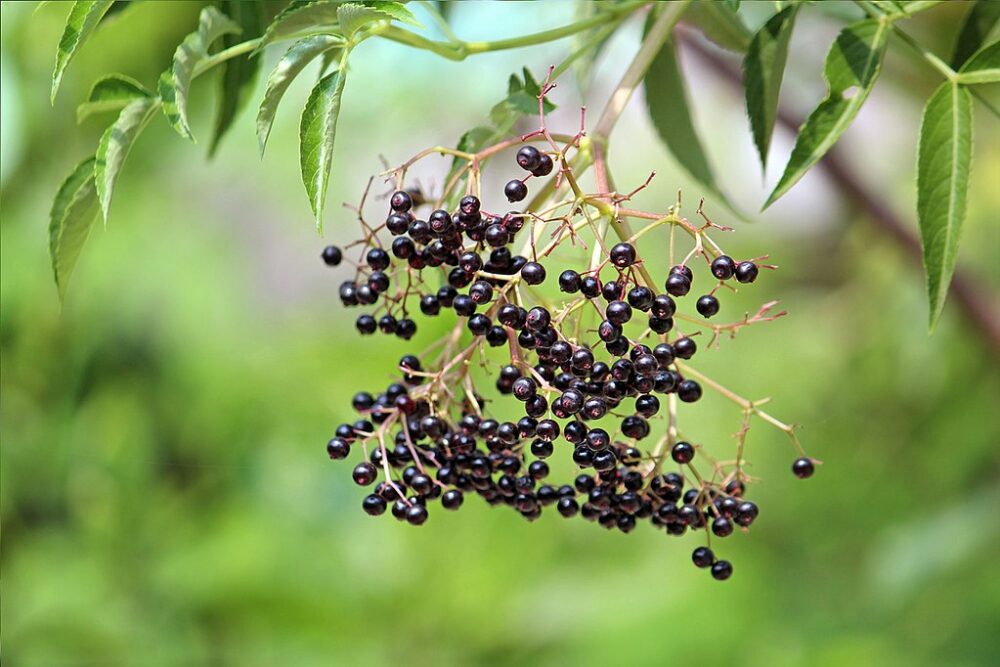

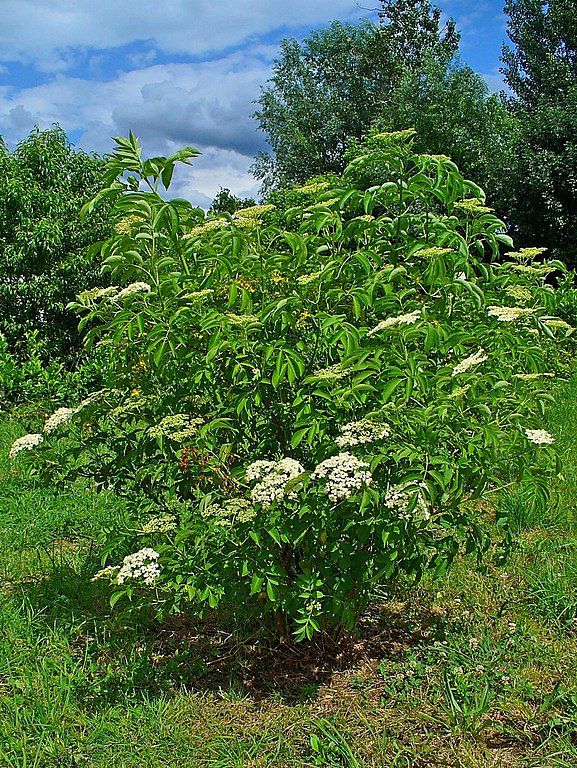
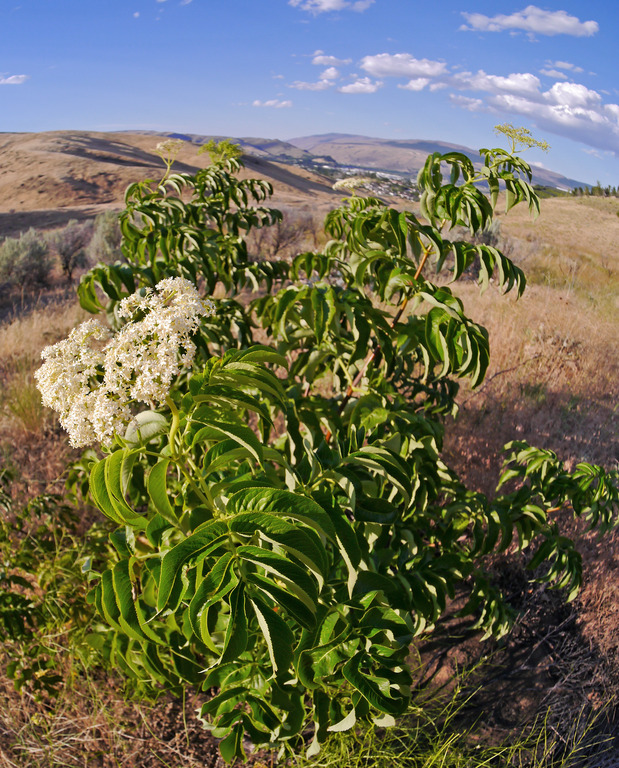
Are all elderberries safe to eat?
Some elderberry varieties can be potentially toxic when consumed raw. The key to unlocking their benefits while avoiding any unwanted risks? Embrace the art of cooking.
Cooking your elderberries thoroughly before indulging in their goodness is the safest route to take. While there might be tempting recipes floating around that call for the inclusion of raw elderberries, it’s wise to steer clear of them.
Can elderberries be mistaken for other safe berries?
Yes! Here are some common edible lookalikes:
1. Chokeberries (Aronia spp.):
- Color: Dark purple to black.
- Cluster Arrangement: Similar to elderberries, but often smaller.
- Distinguishing Features: Chokeberries have simple leaves and are generally safe to eat. They are known for their astringent taste.
2. Blueberries (Vaccinium spp.):
- Color: Blue to dark purple.
- Cluster Arrangement: Clusters are more scattered.
- Distinguishing Features: Blueberries have simple leaves, a distinct taste, and are generally safe to eat.
3. Serviceberries (Amelanchier spp.):
- Color: Red to dark purple.
- Cluster Arrangement: Clusters are similar to elderberries.
- Distinguishing Features: Serviceberries have simple leaves and are edible. They are often sweet and resemble small apples.
Check our forager’s guide to downy serviceberry, as well as our guides on other delicious wild berries:
4. Sloe Berries (Prunus spinosa):
- Color: Dark purple to black.
- Cluster Arrangement: Clusters are smaller and not as flat-topped.
- Distinguishing Features: Sloe berries are the fruit of the blackthorn and have thorny stems. They are generally not eaten fresh but used in making sloe gin.
5. Hackberries (Celtis spp.):
- Color: Dark purple to black.
- Cluster Arrangement: Clusters are small and inconspicuous.
- Distinguishing Features: Hackberries have simple leaves and are generally safe to eat.
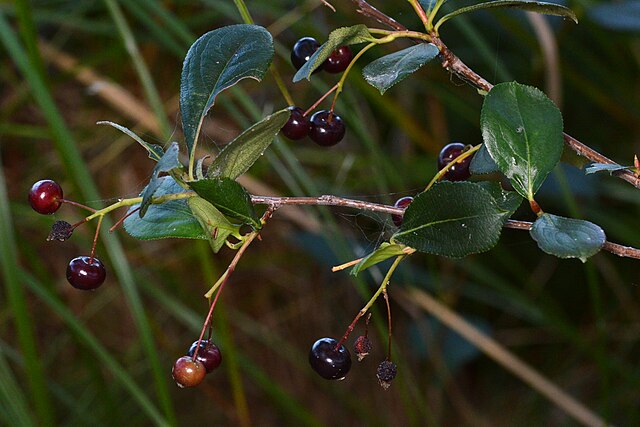
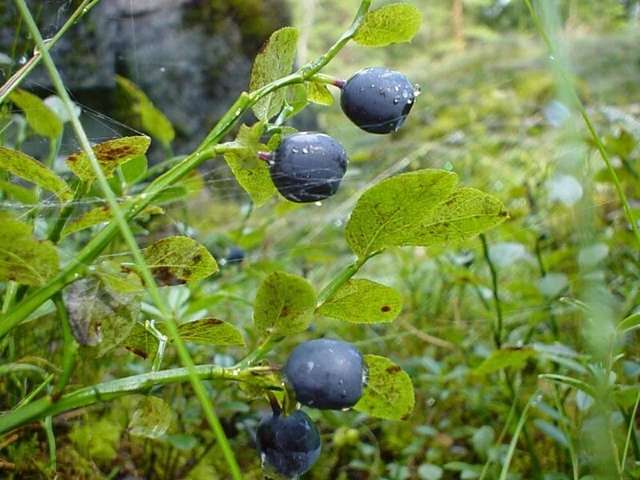

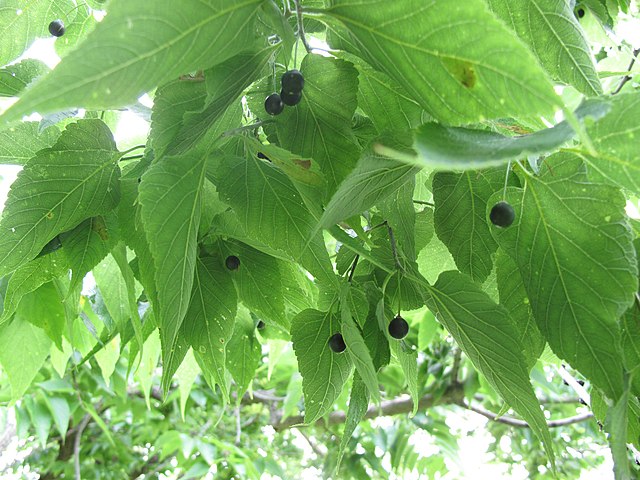
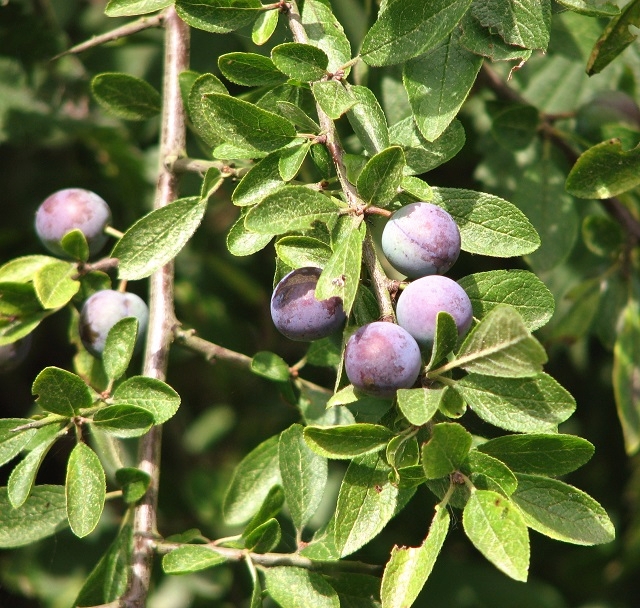
What are the risks of consuming poisonous berries mistaken for elderberries?
Consuming poisonous berries mistaken for elderberries can pose serious health risks, as some toxic berries contain compounds that can lead to various symptoms and, in extreme cases, be fatal.
Here are some potential risks associated with consuming poisonous berries mistaken for elderberries:
- Gastrointestinal distress
- Neurological symptoms
- Cardiac effects
- Respiratory issues
- Organ Failure
- Death (extreme cases only)
doubt, do not consume the berries, and seek guidance from local experts or medical professionals.
Practical elderberry foraging tips
- Focus on known edible varieties like Sambucus canadensis (American elderberry) or Sambucus cerulea (Blue elderberry).
- Harvest elderberries when they are fully ripe (late summer/early fall). Ripe berries are dark purple to black, plump, and easily come off the stem. Avoid unripe berries, as they may cause stomach upset.
- Carry pruning shears or scissors to make clean cuts when harvesting clusters of elderberries. This helps minimize damage to the plant.
- Before harvesting, inspect the clusters for insects, spiders, or other contaminants. Shake or gently tap the clusters to dislodge any unwanted occupants.
- Cooking elderberries is recommended to neutralize any potential toxins and enhance their flavor. Use them in recipes for jams, elderberry syrups, or baked goods.
- Carry field guides specific to your region to assist in accurate identification.
Don’t let poisonous elderberry lookalikes put you off foraging. When you have brought home edible elderberry, you can do lots with it.
Getting into the great, wet outdoors in search of edible plants, herbs, fruits and fungi is one of Sarah’s favorite outdoor pursuits. She thinks there’s nothing better than combining her passion for hiking with the start of the foraging season. Sarah’s definitely not afraid of a little rain and dirt, it’s all part of the fun.

